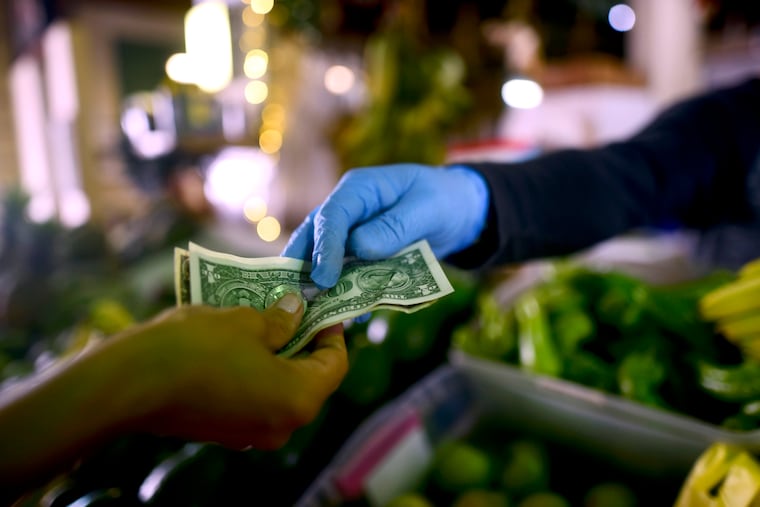Philly has the lowest minimum wage of any major U.S. city, new study says
There’s only one major stop along Amtrak’s Northeast Corridor where minimum wage earners are guaranteed an income below the federally defined poverty line.

In Baltimore, if you work for minimum wage, you’ll pull in $11 an hour.
In Boston, you’ll earn about $12.75. In Washington, D.C., it’s $14. In New York City, $15.
But there’s only one major stop along Amtrak’s Northeast Corridor where minimum-wage earners are guaranteed an income below the federally defined poverty line.
That’s Philadelphia, where minimum-wage earners eke out $7.25 an hour.
Pennsylvania’s largest metropolis has what is effectively the lowest minimum wage of any major city in America, according to a study published Wednesday by the Pew Charitable Trusts.
“Philadelphia is kind of an outlier, particularly for cities in this section of the country,” said the study’s author, Seth Budick, an officer with Pew’s Philadelphia Research and Policy Initiative.
“We knew going in that Philadelphia would be among the lowest when the minimum was adjusted for local wage levels and the cost of living,” Budick said. “But we didn’t anticipate it being the absolute lowest.”
In terms of the raw dollar figure, Philadelphia is tied with Pittsburgh and a dozen other major municipalities in offering the least-paid workers the federally mandated minimum of $7.25.
Figured as annual income, that amounts to $15,080 annually. A two-member household with a total income below $16,910 is considered to be living in poverty.
Minimum-wage occupations included cashiers; nursing, psychiatric, and home health aides; chefs and cooks; retail salespeople; and personal-care aides, according to Pew.
The low pay may be hurting economic development, said City Councilmember Helen Gym.
“It’s not surprising that the job growth rate in Pennsylvania has been slower than other states,” Gym said. “It’s clear the low minimum is unsustainable. New Jersey is going to a $15 an hour rate by 2024, and it’s right across the river from us. And we’re surrounded by states all of which have higher minimum wages.”
Other cities in the U.S. paying workers the federal minimum include El Paso, Texas; Memphis, Tenn.; and Charlotte, N.C. But because basics cost more in Philadelphia, the minimum wage does not buy as much as it does in the South.
The low minimum wage ensures that Philadelphia holds on to its status as America’s poorest big city, said John Meyerson of Raise the Wage Pa., a statewide coalition of labor, faith, and business organizations.
“I don’t think there’s any doubt about it,” Meyerson said. “We’re in a downward spiral. We’re not building any new factories. Without government intervention or worker organization, things are not going to change.”
Many cities have raised their minimums above their state baselines. Seattle, for example, has a minimum wage of $16.39, almost $3 more than the rest of Washington state’s minimum of $13.50.
Last year, Philadelphia voters overwhelmingly approved a ballot measure to encourage the city to lobby state lawmakers — or act on its own — to establish a $15-an-hour minimum wage.
That’s unlikely to happen. Pennsylvania state law prevents local jurisdictions from raising the minimum wage. That policy, known as preemption, is also in place in 27 other states.
Mayor Jim Kenney said the study “confirms what we instinctively know to be true: Low wages and high poverty go hand in hand.”
“It also shows that cities that are preempted by state law have both lower minimum wages and higher poverty rates, as is the case in Philadelphia,” Kenney said in a statement. “In a time of great economic uncertainty where our lowest-wage workers, largely women and people of color, are among our most essential workers, we must join together — state and local governments, private and public sectors — to raise wages.”
Only half of those workers were employed full time. Minimum-wage earners, according to Pew, were disproportionately “nonwhite or Hispanic, young, and lacking a college degree,” and 57% were women.